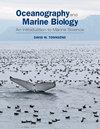HABITAT COUPLING BY MID-LATITUDE, SUBTIDAL, MARINE MYSIDS: IMPORT-SUBSIDISED OMNIVORES
1区 生物学
Q1 Agricultural and Biological Sciences
引用次数: 47
Abstract
Mysids often dominate mobile benthic epifaunas of mid-latitude continental shelves. Macquart-Moulin & Ribera Maycas (1995) reported that the six most abundant species on western and southern European shelves are all strong diel migrators. Published daytime epibenthic sledge (sled) data from the surf zone to the shelf edge matched with published behavioural data on the most abundant species were used to test, confirm and extend that relationship to other coastal regions and to identify an association of abundant migrators with species that are important in fish diets. They also reveal another pattern: a correspondence between abundant surf-zone species and species that dominate estuarine faunas seasonally. Population concentrations at estuary mouths, sills of fjords and in the surf zone suggest a lifestyle dependent upon horizontal fluxes. Marine mysids that migrate between habitats are chronically undersampled in the field, however, and are underrepresented in food-web models. Unfortunately, no single methodology samples both pelagic and benthic individuals well and nearly all shelf measurements so far reported must be considered underestimates of local abundance. Mysids are major dietary components for many benthic and pelagic fishes, mammals, cephalopods and decapods, often for key life stages, and often because mysid migrations result in encounters with predators. Mysids can be extraordinarily omnivorous, with demonstrated capabilities to digest cellulose and diets spanning macrophyte detritus, more labile detritus, large microalgae, and smaller animals and heterotrophic protists. They can be sufficiently abundant and active to play roles in sediment transport. Contributing factors to their underappreciation have been the lack of fidelity of mysids to single habitats, coupled with higher fidelity of investigators to the study of single habitats. Sampling with classical methods has been problematic because of effective evasion by mysids, compounded by extreme patchiness associated with mysid schooling. Their frequent absence from coastal and even estuarine food-web models has not been more conspicuous because the combination of their migration and omnivory spreads their feeding impacts and because they are subsidised by horizontally imported plankton and seston and are themselves horizontally exported in the form of predator gut contents and biomass. They clearly link pelagic and benthic food webs in two important and ecosystem-stabilising ways, however, by feeding in both habitats and by succumbing in both habitats to both cruising and sit- and-wait predators. Consideration of resource and predation gradients and limited data implicate horizontal, diel migrations as well, extending these linkages, especially in the onshore-offshore direction. Somewhat paradoxically, the same features that have made them difficult to study by classical means, in particular schooling, diet breadth, ontogenetic change in diet and migration between habitats, suit migrating mysids well to new, individual- or agent-based modelling approaches. Moreover, benthic observatories deploying acoustic technologies with spatial and temporal resolution sufficient to resolve individual migratory behaviours promise powerful tests of such models.栖息地耦合由中纬度,潮下,海洋蚕蛹:进口补贴杂食动物
在中纬度大陆架的活动底栖动物中,壳类动物经常占主导地位。Macquart-Moulin & Ribera Maycas(1995)报告说,西欧和南欧大陆架上最丰富的六种物种都是强烈的鸟类迁徙者。从冲浪区到大陆架边缘已公布的白天底栖动物雪橇(雪橇)数据与已公布的最丰富物种的行为数据相匹配,用于测试、确认并将这种关系扩展到其他沿海地区,并确定丰富的迁徙动物与鱼类饮食中重要的物种之间的联系。它们还揭示了另一种模式:丰富的冲浪区物种和季节性主导河口动物群的物种之间的对应关系。人口集中在河口、峡湾的海岸和冲浪区,表明一种依赖于水平通量的生活方式。然而,在栖息地之间迁徙的海洋蚕蛹在野外的样本长期不足,在食物网模型中代表性不足。不幸的是,没有一种方法能很好地对远洋和底栖生物个体进行取样,而且迄今报告的几乎所有陆架测量都必须被认为是对当地丰度的低估。足虫是许多底栖和远洋鱼类、哺乳动物、头足类和十足类动物的主要饮食成分,通常是在生命的关键阶段,而且通常是因为足虫的迁徙会遇到捕食者。食糜虫可以是非常杂食性的,具有消化纤维素和食物的能力,包括大型植物碎屑、更不稳定的碎屑、大型微藻、小型动物和异养原生生物。它们可以足够丰富和活跃,在输沙中发挥作用。造成它们被低估的因素是蝇类对单一栖息地的保真度不足,以及调查人员对单一栖息地研究的保真度较高。由于mysid的有效逃避,再加上与mysid学校教育相关的极端不一致,用经典方法进行抽样是有问题的。它们经常从沿海甚至河口食物网模型中消失,这一点并不明显,因为它们的迁徙和杂食性相结合,扩大了它们的摄食影响,而且它们得到了水平进口的浮游生物和浮游生物的补贴,它们自己又以捕食者肠道内容物和生物量的形式水平出口。然而,它们显然以两种重要的、稳定生态系统的方式将远洋和底栖食物网联系起来,即在两种栖息地都觅食,并在两种栖息地都屈服于巡航和坐等捕食者。考虑到资源和捕食梯度以及有限的数据,也涉及水平、昼夜迁移,扩展了这些联系,特别是在陆上-海上方向。有些矛盾的是,使它们难以用经典方法研究的相同特征,特别是学校教育、饮食广度、饮食的个体发生变化和栖息地之间的迁移,很适合新的、基于个体或主体的建模方法。此外,海底生物观测站部署的声学技术具有足够的空间和时间分辨率,可以解决个体的迁徙行为,有望对这些模型进行有力的测试。
本文章由计算机程序翻译,如有差异,请以英文原文为准。
求助全文
约1分钟内获得全文
求助全文
来源期刊
自引率
0.00%
发文量
0
期刊介绍:
With increasing interest in the field and its relevance in global environmental issues, Oceanography and Marine Biology: An Annual Review provides authoritative reviews that summarize results of recent research in basic areas of marine research, exploring topics of special and topical importance while adding to new areas as they arise

 求助内容:
求助内容: 应助结果提醒方式:
应助结果提醒方式:


